Some nature pics and a Bubba Fatass
Finals week for school... not terribly worried. I don't usually get worked up over tests. I probably should get MORE worked up over tests, considering I haven't done as well on some of the quizzes as I would have liked... oh, well.
ANYWAY. I have some pictures of Bubba Fatass and I have some pictures from a walk over by the creek (instead of at the lake where I usually am).

Bubba has no idea how the entire side of this box got broken.

This is him lounging in it before it got broken.
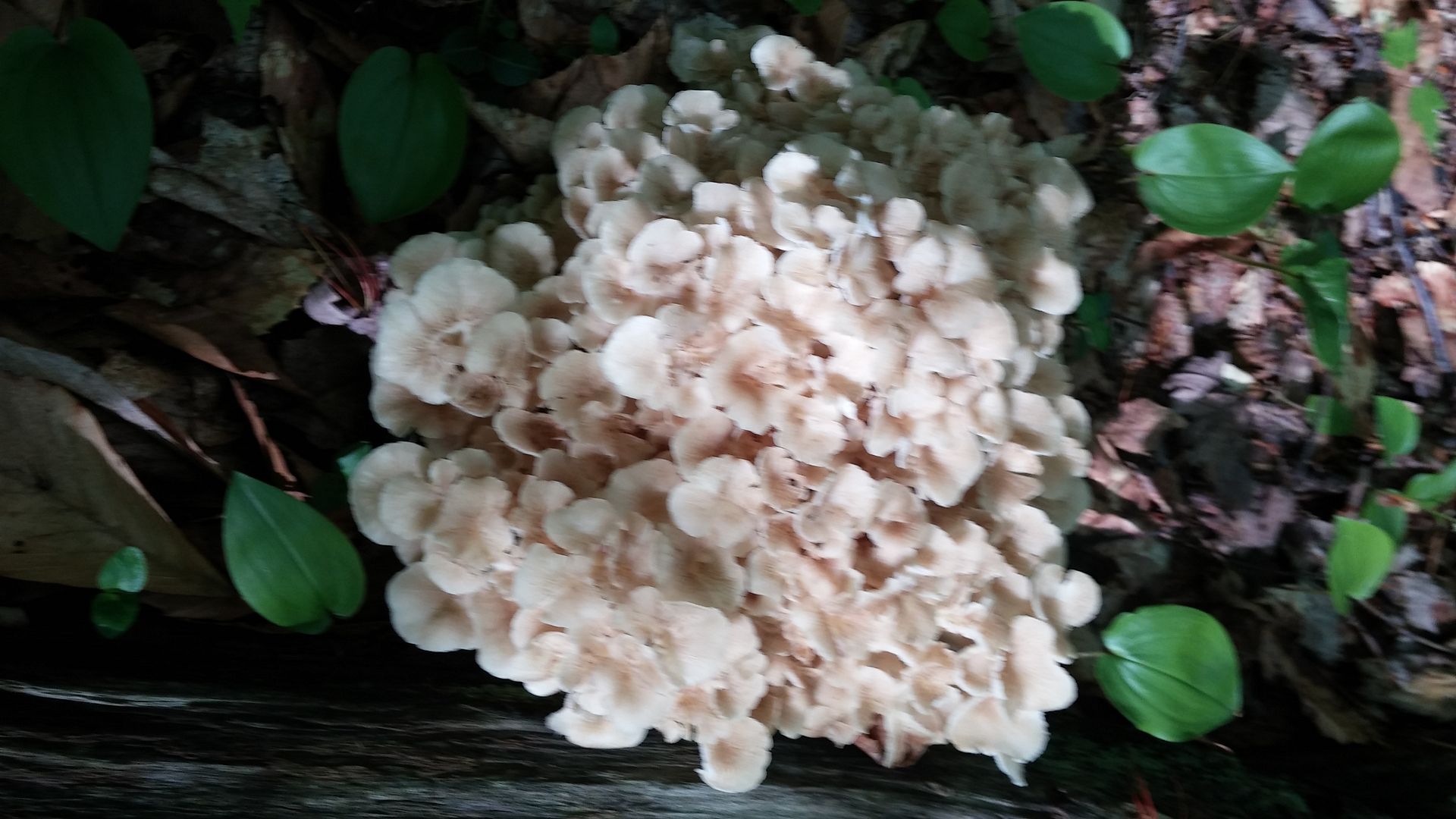
I wish this picture had come out more clearly, but my camera doesn't do well in deep shade. This isn't a flower cluster... it's a fungus. I'm trying to find out what kind, since I've never seen this one before. I had to touch it to make sure, but it is waxy like a fungus, growing directly out of a rotting log, and has no leaves... remarkably flower-like, though.
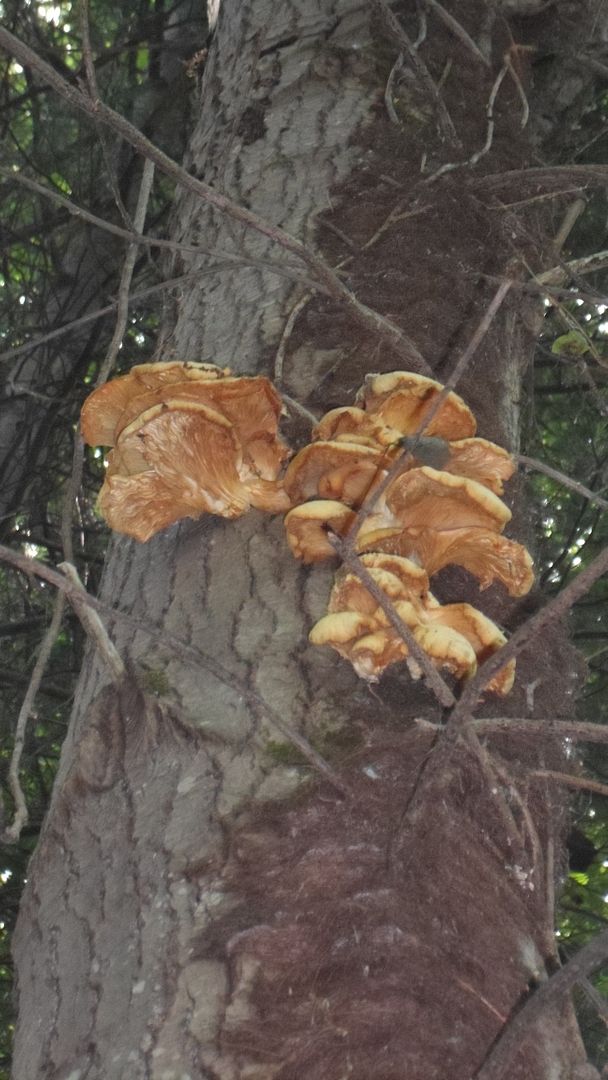
Some nice orangey gilled fungi way up a tree. Apparently they do not object to the poison ivy because they are growing over/through the thick vine wrapped around this tree. It always amazes me how something as soft and delicate as a mushroom can push through solid wood.

This one IS from the lake and I missed it in my last post... pretty wild flags (or irises, depending on who you talk to). It is technically an iris, but "flag" is more common in some places and is used interchangeably with "iris" for all flowers in this group, or for just the wild ones. They do most of their spreading by underground root systems and like to come up in large clusters.

Pretty orange mushrooms growing on some very old and rotty wood. I struggle with identification of even the most distinctive mushrooms, these might be one of several mushrooms commonly known as false chanterelle... real chanterelles are choice edibles and some people are not very smart and assume that anything orange with a vaguely upcurved cap much be a chanterelle even though they are clearly not (and true chanterelles don't grow on wood).
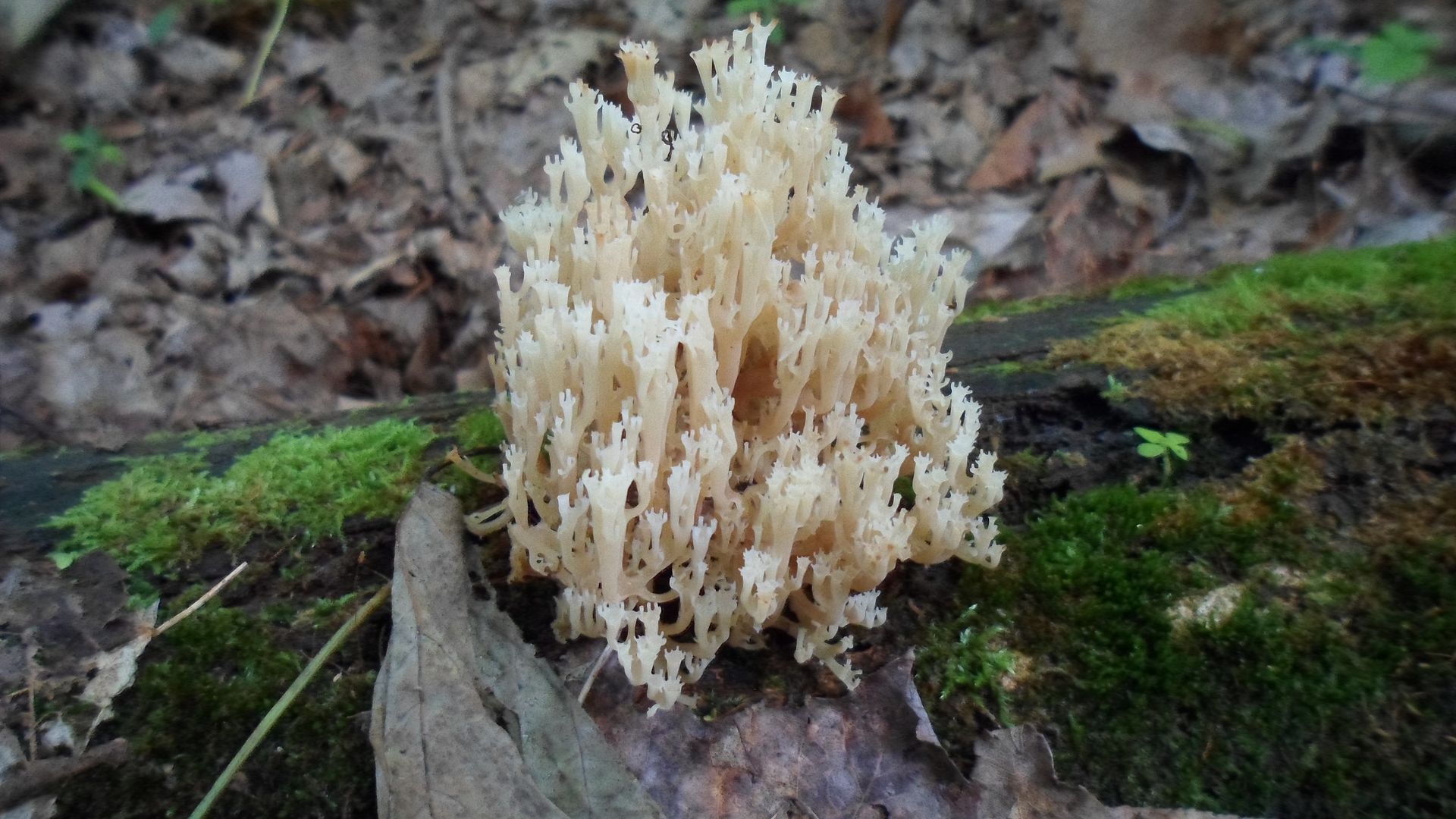
Delicate-looking coral fungi are never found on live or even dying trees... they are one of the final steps in the wood decay process and are only found on very rotten logs; they often appear to be growing out of the ground because the wood they're feeding on is so decayed it has mostly crumbled into the dirt. They are a critical step in finishing the decay process that other fungi start, breaking wood down to its last remnants and releasing material back into the soil.
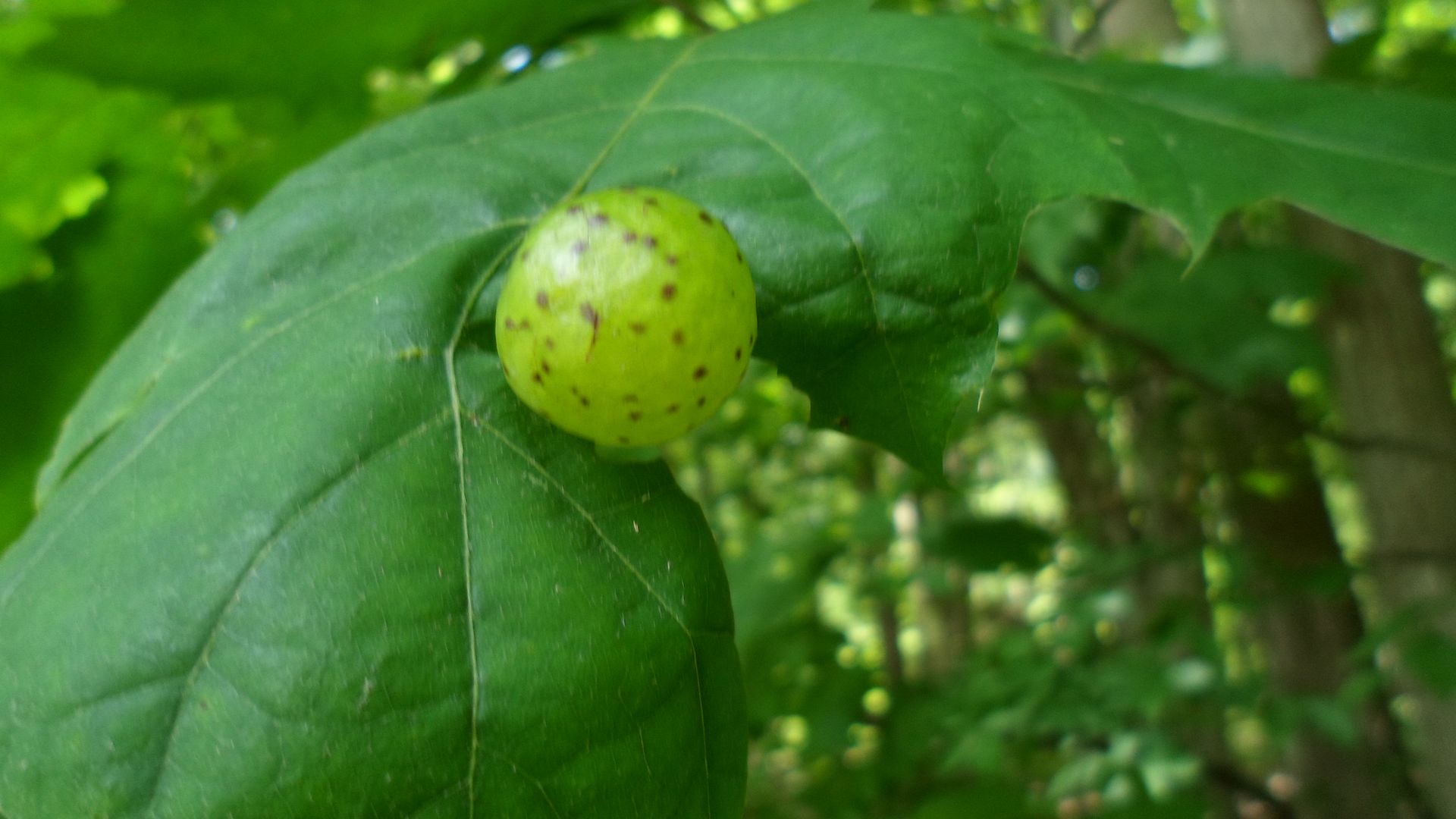
A pretty leaf gall. It's amazing to think that this gall is entirely made of cells that the plant itself produces... the larva inside sends out chemical signals that confuse the plant's normal growth and tell it to build this weird thing instead. It's not just a shell, either... the cells it's made of are still very much alive and they form a layer inside the gall that the larva feeds off of until it pupates. The plant, responding to the chemical misinformation, will continue to regenerate these cells so the larva never runs out of food.
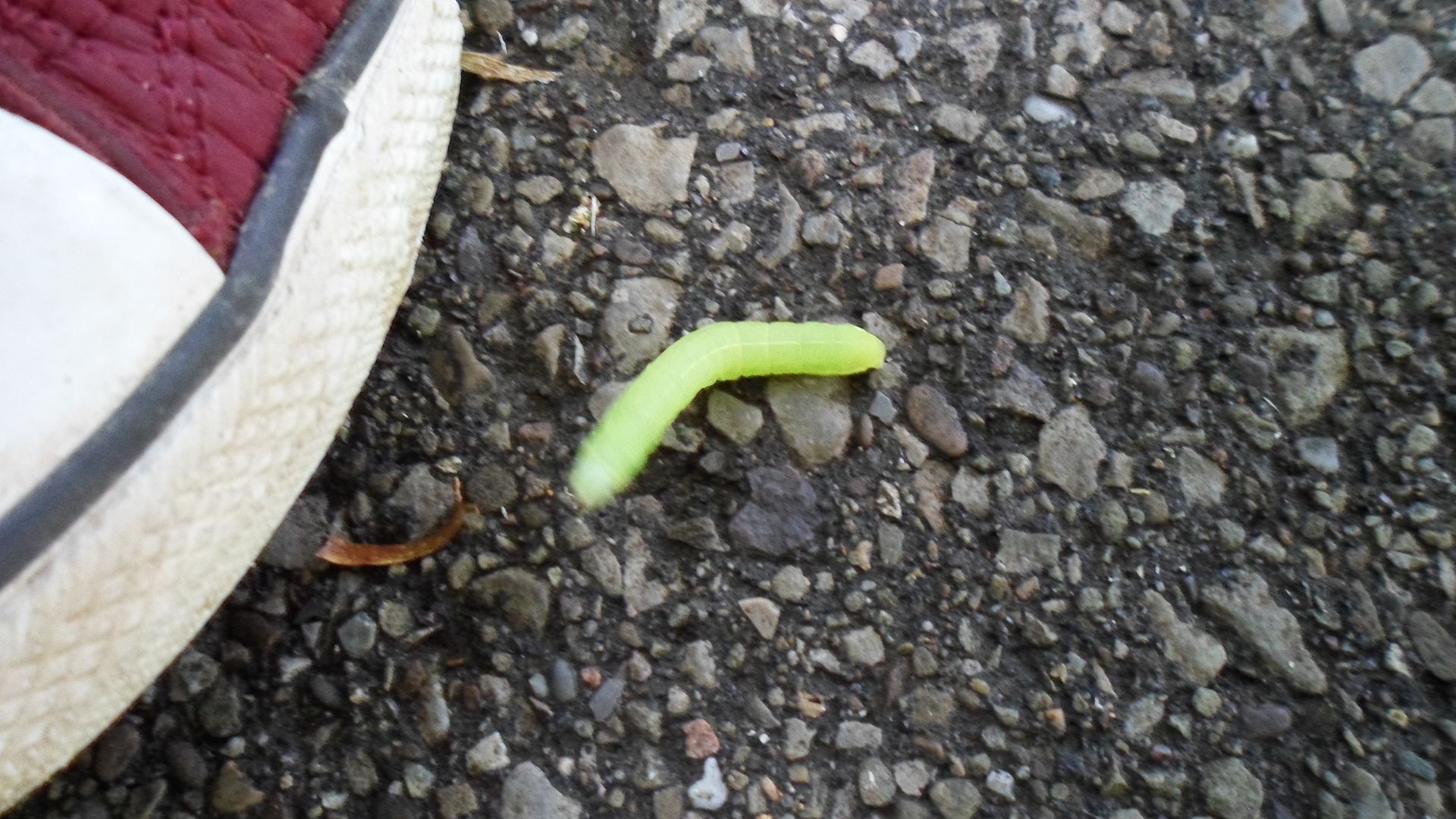
Another little larva, making its way across the path. The bright green that makes it easy to hide among young leaves was clearly not designed by evolution to disguise it on black pavement.

This is a large creek and it drains a very large watershed, so its water levels tend to change quite drastically. As a result, it is surrounded by floodplains and by low-lying areas where the water backs up and then sits, taking weeks to try out. This is one of those spots, although the creek is high enough that it's still actively filling most of its floodplain. These trees will not be underwater once things start to dry out, but they're species that can tolerate temporary immersion for weeks at a time.
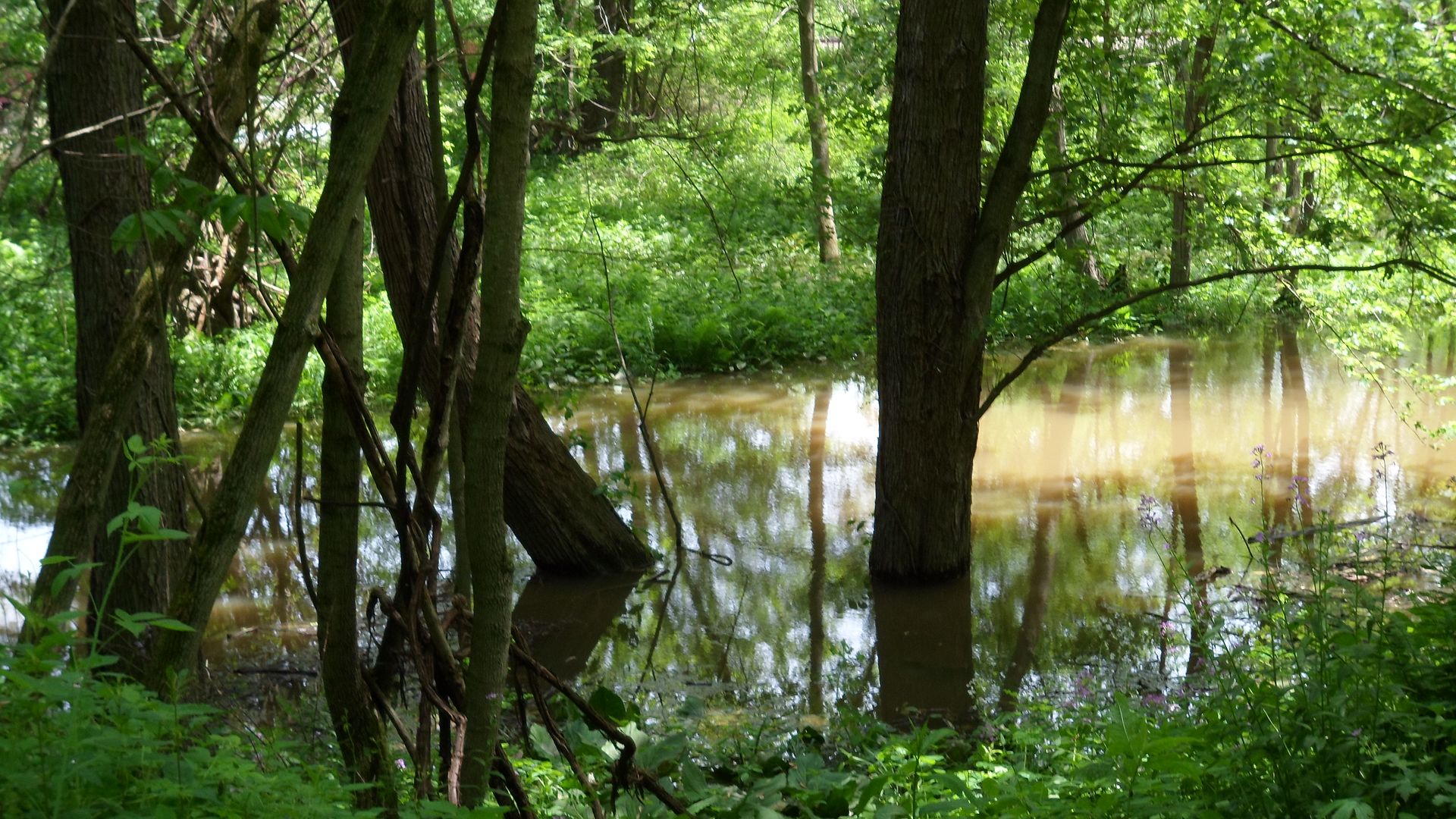
Another still area where water from the creek has drained backwards into one of these little "overflow ponds", for lack of anything better to call them. Again, these trees are willing to tolerate this temporarily but not for the entire growing season. By the time summer is in full swing and the spring rains have finished, they will be on dry (or at least merely soggy) land again.

Rusts are a specific group of fungi and a serious problem for agriculture, as they encrust and cause massive damage to the leaves of many crops. Much effort and expense is dedicated to keeping this particular pest out of farmed fields, but since most rusts have wild host plants they can live on as well, eliminating them is a near-impossible task.
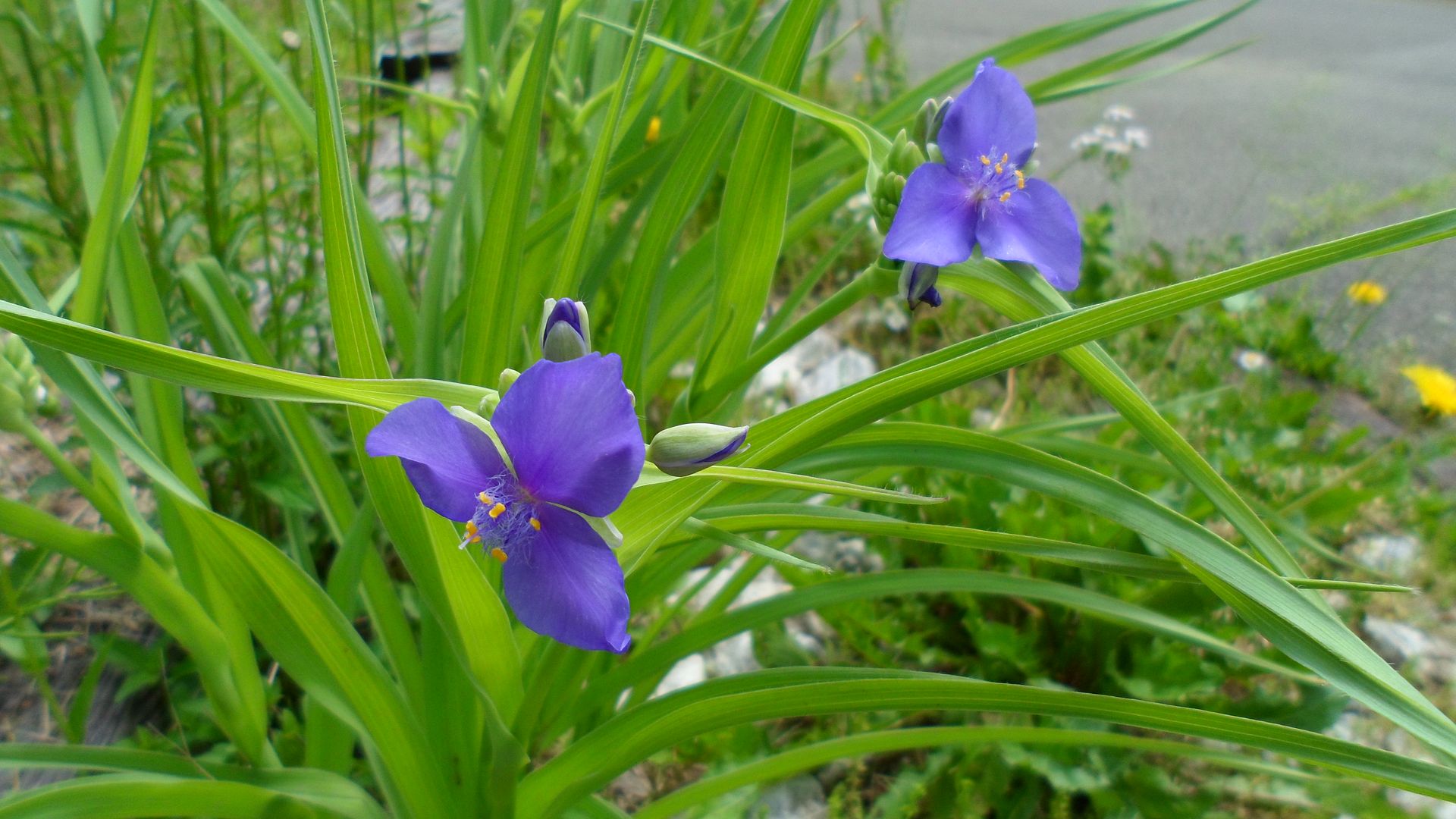
These beauties, growing beside the parking lot, are Tradescantia ohiensis, or as it is commonly known, Ohio spiderwort. Since neither Ohio nor spiderwort are appealing names, I happen to think "tradescantia" would be a lovely name, althoug this name already belongs to the entire spiderwort genus and therefore cannot be fairly appropriated as the title of a particular member. Sigh.
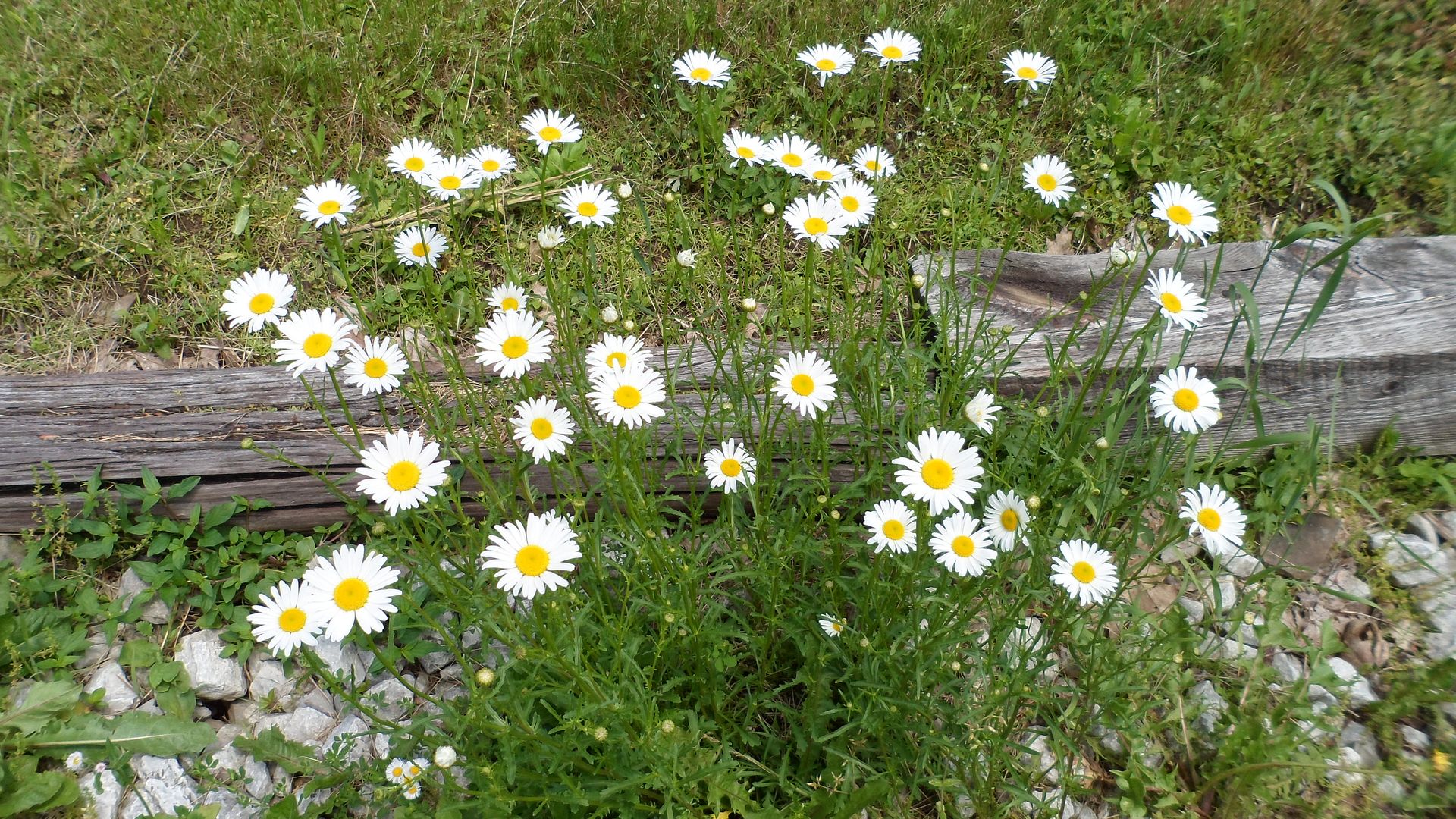
And on that random note I will leave you with some parking lot daisies, which are, as always, for my darling Looloo, as they are her Official Flower.

(Random question: how many times do you think they filmed this shot and he dropped the hammer?)
.
.
.
ANYWAY. I have some pictures of Bubba Fatass and I have some pictures from a walk over by the creek (instead of at the lake where I usually am).

Bubba has no idea how the entire side of this box got broken.

This is him lounging in it before it got broken.

I wish this picture had come out more clearly, but my camera doesn't do well in deep shade. This isn't a flower cluster... it's a fungus. I'm trying to find out what kind, since I've never seen this one before. I had to touch it to make sure, but it is waxy like a fungus, growing directly out of a rotting log, and has no leaves... remarkably flower-like, though.

Some nice orangey gilled fungi way up a tree. Apparently they do not object to the poison ivy because they are growing over/through the thick vine wrapped around this tree. It always amazes me how something as soft and delicate as a mushroom can push through solid wood.

This one IS from the lake and I missed it in my last post... pretty wild flags (or irises, depending on who you talk to). It is technically an iris, but "flag" is more common in some places and is used interchangeably with "iris" for all flowers in this group, or for just the wild ones. They do most of their spreading by underground root systems and like to come up in large clusters.

Pretty orange mushrooms growing on some very old and rotty wood. I struggle with identification of even the most distinctive mushrooms, these might be one of several mushrooms commonly known as false chanterelle... real chanterelles are choice edibles and some people are not very smart and assume that anything orange with a vaguely upcurved cap much be a chanterelle even though they are clearly not (and true chanterelles don't grow on wood).

Delicate-looking coral fungi are never found on live or even dying trees... they are one of the final steps in the wood decay process and are only found on very rotten logs; they often appear to be growing out of the ground because the wood they're feeding on is so decayed it has mostly crumbled into the dirt. They are a critical step in finishing the decay process that other fungi start, breaking wood down to its last remnants and releasing material back into the soil.

A pretty leaf gall. It's amazing to think that this gall is entirely made of cells that the plant itself produces... the larva inside sends out chemical signals that confuse the plant's normal growth and tell it to build this weird thing instead. It's not just a shell, either... the cells it's made of are still very much alive and they form a layer inside the gall that the larva feeds off of until it pupates. The plant, responding to the chemical misinformation, will continue to regenerate these cells so the larva never runs out of food.

Another little larva, making its way across the path. The bright green that makes it easy to hide among young leaves was clearly not designed by evolution to disguise it on black pavement.

This is a large creek and it drains a very large watershed, so its water levels tend to change quite drastically. As a result, it is surrounded by floodplains and by low-lying areas where the water backs up and then sits, taking weeks to try out. This is one of those spots, although the creek is high enough that it's still actively filling most of its floodplain. These trees will not be underwater once things start to dry out, but they're species that can tolerate temporary immersion for weeks at a time.

Another still area where water from the creek has drained backwards into one of these little "overflow ponds", for lack of anything better to call them. Again, these trees are willing to tolerate this temporarily but not for the entire growing season. By the time summer is in full swing and the spring rains have finished, they will be on dry (or at least merely soggy) land again.

Rusts are a specific group of fungi and a serious problem for agriculture, as they encrust and cause massive damage to the leaves of many crops. Much effort and expense is dedicated to keeping this particular pest out of farmed fields, but since most rusts have wild host plants they can live on as well, eliminating them is a near-impossible task.

These beauties, growing beside the parking lot, are Tradescantia ohiensis, or as it is commonly known, Ohio spiderwort. Since neither Ohio nor spiderwort are appealing names, I happen to think "tradescantia" would be a lovely name, althoug this name already belongs to the entire spiderwort genus and therefore cannot be fairly appropriated as the title of a particular member. Sigh.

And on that random note I will leave you with some parking lot daisies, which are, as always, for my darling Looloo, as they are her Official Flower.

(Random question: how many times do you think they filmed this shot and he dropped the hammer?)
.
.
.